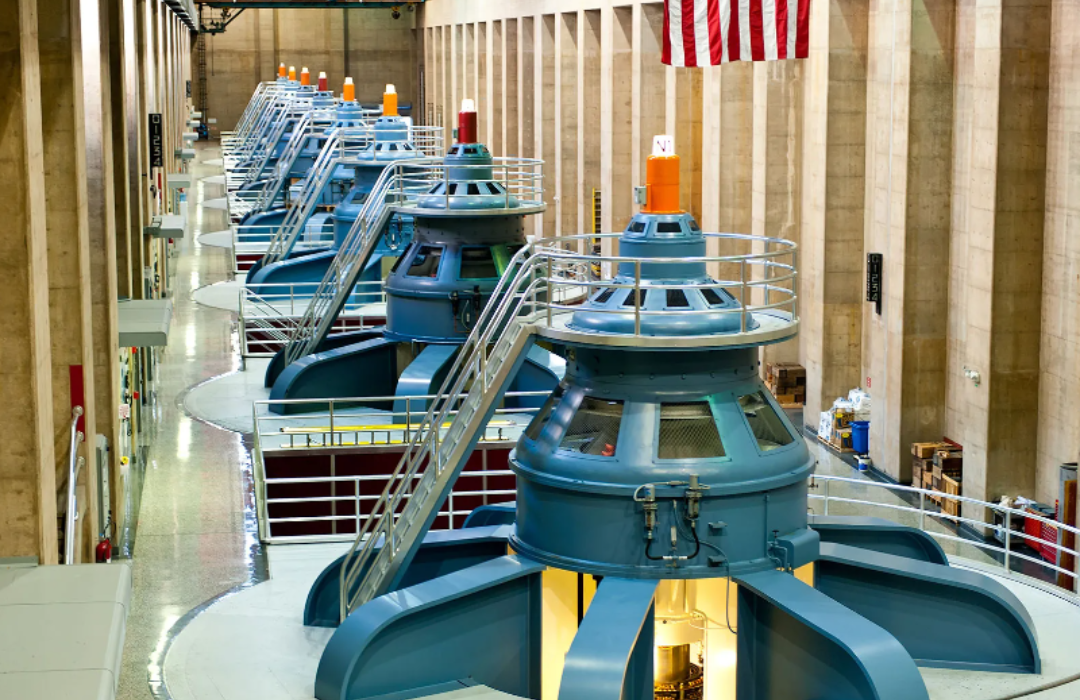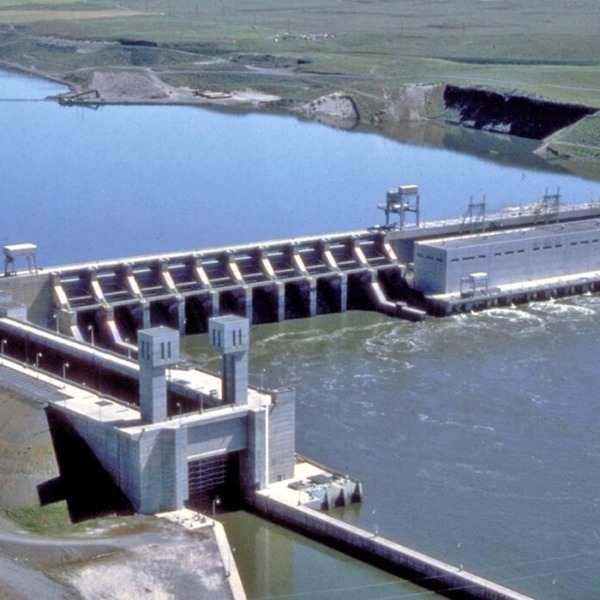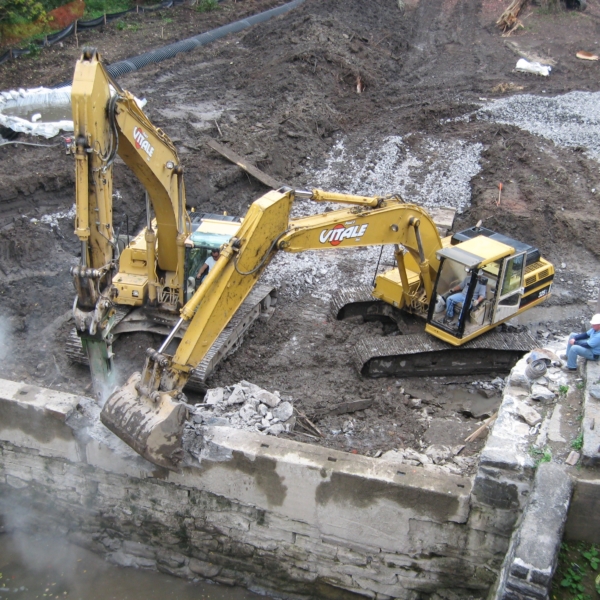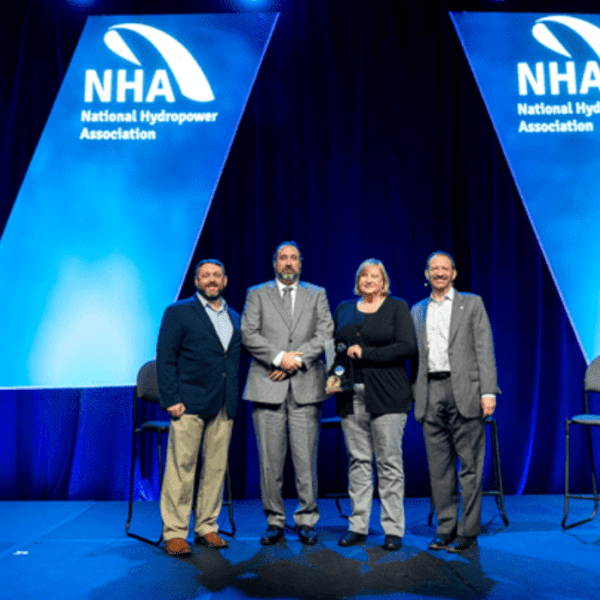SPONSORED CONTENT
Grid stability is critically dependent upon hydro units performing under abnormal circumstances. Much research has been done on the topic of regulating both isolated systems and the Bulk Electrical System (BES). Despite this extensive research, there is a gap of available information on electrical system stability in the case of units that are normally connected to the BES but which may run islanded in an abnormal situation.
Because frequency stability is critically dependent upon hydro units performing under abnormal circumstances, and because isolated electric systems must be designed to independently fulfill reliability, efficiency, and power quality requirements, this lack of available information on maintaining stability in these circumstances is cause for concern.
Before delving into how to maintain stability of a system in abnormal situations, it is important to consider governor response and the factors which influence how a unit functions: governor settings, governor control modes, and unit load.
The primary purpose of a governor for a hydroelectric unit is to control the flow of water through the turbine, and thus control the power output developed by the turbine. Governors achieve this by controlling the speed and loading of the unit to enable the generator to synchronize to the grid in a safe and stable manner.
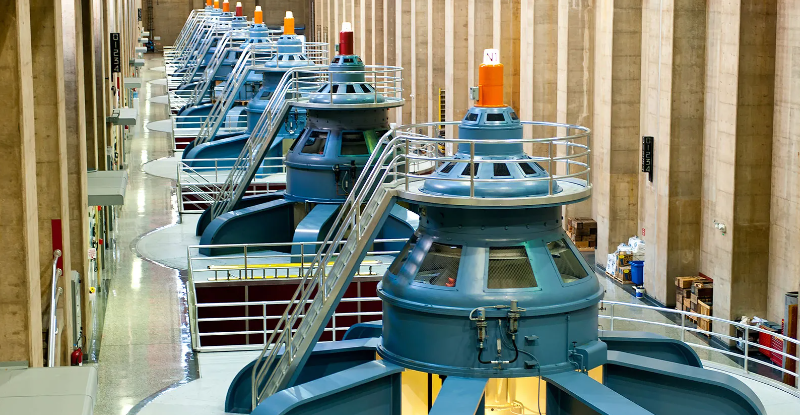
Inherent to governor functionality is the use of droop, which is an automatic proportional adjustment of the governor speed settings in response to frequency deviations. Governors respond to these deviations using a compensating controller, such as a Proportional, Integral, and Derivative (PID) controller, temporary droop, or other controlling mechanism, which determines how quickly the governor responds. Together, how much the governor changes and how quickly it does so dictate governor response.
Notably, PID gains are tuned for a specific system. Optimal PID gains and droop are configured for an infinitely stable grid when connected to the BES under normal conditions; these governor settings are different for units running at different megawatts of load. For example, the optimal PID gains for a 120MW unit running 10MW of load is different from a 120MW unit running 1 MW of load, which is different from two units running 10MW of load, and so on and so forth.
The settings for an infinitely stable grid will not be the same as when the unit isolates. Therefore, it is imperative that operators determine what kind of load the unit carries if it is known; if there is a typical standard load or a known common isolating condition if the load is unknown; or if the unit can isolate in any number of abnormal conditions with an unknown load. In a known system, of known generation and known load, configuring the governor response parameters for stable operation is a relatively straightforward task; in an unknown or atypical system, configurations become more difficult to determine.
Additionally, while connected to the BES, a governor may operate in one of several control modes, such as following a megawatt setpoint, maintaining a forebay level, or following a flow setpoint. While these control modes typically have a frequency response element, they are often designed and tuned to prioritize their primary control parameter. Additionally, these modes may have other features that are only appropriate when connected to the BES, such as fast, undamped, or loading/feedforward. When operating in an isolated system, it is important to operate with a traditional “speed droop with gate feedback” mode (sometimes called “speed droop,” “speed/frequency control,” or “gate/position control” mode), with all fast-load functionality, such as feedforward, disabled.
Now that we understand the factors that determine governor response, we can explore system stability and how it can be maintained.
Controlling inertia is one of the single biggest things an operator can do to ease the transition between BES and isolated functionality. Stability is a function of the total inertia constant of a unit’s load, and it can be influenced by the size of the unit running or, as will be shown in one of our case studies, by having units in a plant on spinning reserve/motoring/condensing. When neighboring units are in a condensing mode, wherein they are connected to the grid and spinning but the wicket gates are closed, it provides flywheel support to further dampen any instability. The condensing unit acts as a means of inertia support; as the unit speeds up or slows down, it dampens unstable reactions. The greater the inertia value of the machine, the greater the dampening effect.
Stability is also governed in part by Mechanical Starting Time and Water Starting Time. Mechanical Starting Time (or the time in seconds to “accelerate the rotating elements, such as generator rotor, shaft, and turbine runner from zero to synchronous speed under the application of rated power”) and Water Starting Time are important physical characteristics and metrics for the physics of the water conduit or conveyance system (canal, penstock, intake, spiral case, draft tube, etc.). Specifically, Water Starting Time describes the “time to completely change velocity or flow rate of an enclosed fluid column from one end to the other”. To clarify, it is defined as the time in seconds required to accelerate the water in the penstock to rated velocity at rated head.
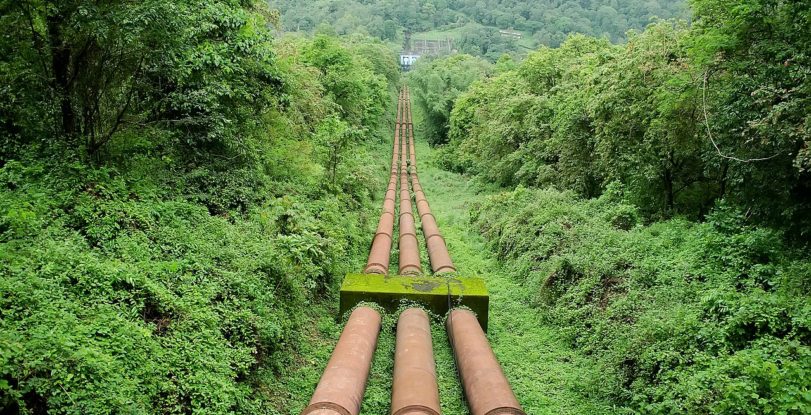
Water Starting Time is dependent upon the flow of water, which is dictated by the wicket gates. The lower a unit is operating at a percentage of its rated load, the more stable the unit is going to be. For example, a 10MW unit running 1MW of load is more stable than a 10MW unit running 10MW of load because Water Starting Time will be approximately ten times the size. Therefore, keeping Water Starting Time low is extremely important when considering system stability.
Typical concerns when discussing Water Starting Time include penstock length and the number of units being served by a single penstock. Penstock length should generally be less than five times the head level of the turbine, as pressure rise can result in limited servo timing. Moreover, when multiple units are served by a single penstock, there can be adverse effects on frequency control and stability.
HOW UNITS ISOLATE AND HOW GOVERNORS RESPOND
Having discussed the basics of governor functionality when connected to the BES, as well as the factors that affect system stability, we can now discuss how governors respond when units isolate. There are four categories of unit isolation:
- Planned Separation – Known Load
- Unplanned Separation – Known Load
- Planned Separation – Unknown Load
- Unplanned Separation – Unknown Load
Additionally, there are three means of governor operation involving switching between sets of gains and modes in order to react to these categories of unit isolation:
- Manual Operator Action: Via some input (local in the control room or remote via SCADA) the operator changes the governor configuration. This can either be to a preset configuration with a single input or by manually changing multiple parameters such as droop and gain settings. While this gives the most control, it requires both a planned separation and training.
- Definite Detection: Equipment, such as transmission breakers, are monitored and, when opened, indicate that a system is isolated. While this is a great means of definitively detecting isolation, it only works at some plants with a local load and one or a small handful of transmission lines.
- Inferred Detection: By monitoring the frequency of the grid, instability in frequency can imply that the governed unit is isolated. This is the most common means of detection but comes with its own challenges.
ADDITIONAL CONSIDERATIONS
NERC standard BAL-001-TRE-1 “Primary Frequency Response in the ERCOT Region,” released in April 2015 and whose purpose is to “maintain interconnection steady-state frequency within defined limits,” has been a hot topic when discussing operational compliance. Essentially, the standard establishes limits for frequency tolerances and corrective actions in order to ensure grid stability. This requires a significant increase in governor response when units are connected to the bulk grid.
While this is currently applicable in the region that falls under Electric Reliability Council of Texas jurisdiction, it is arguably applicable outside of that region in that the onus is placed upon generator owners and operators with respect to the provision of primary frequency response. Particularly, generator owners must operate each generating unit/generating facility connected to the interconnected transmission system with the governor in service and responsive to frequency when the generating unit/generating facility is online and released for dispatch. This NERC guideline covers how to tune governors when connected to the grid; because it recommends making BES gains higher, proper detection of unit isolation is that much more difficult.
Based on Emerson’s real-world experience, the best course of action when assessing how to transition between configurations connected to the BES and configurations connected to islanded systems, is to identify possible scenarios of isolation at the time of designing and/or configuring the governor. These possible scenarios should be simulated using models to determine proper droop and compensation settings. If able, these settings should be tested at the time of commissioning.
For specific case studies or more information on how to keep your plant and fleet governors reliably running, learn more at emerson.com/hydro or contact Emerson’s hydro governor experts at hydro@emerson.com.



